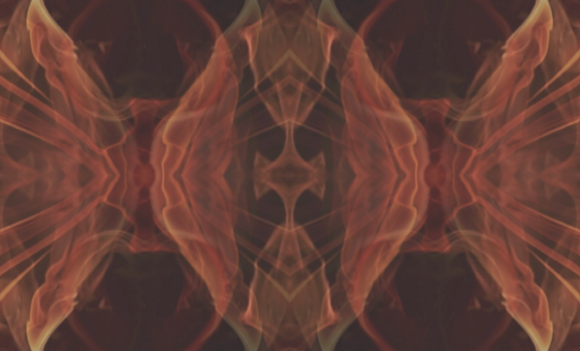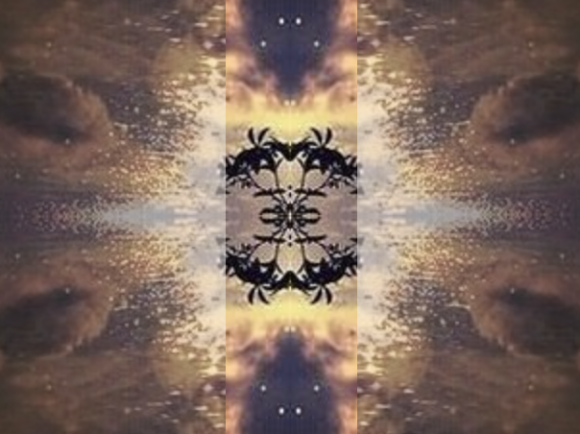By this I do not mean, obviously, that whenever you look into a mirror, in everyday life, you would be struck immediately by some kind of deep, existential insight. (We all know that doesn’t happen.) What I mean is that once we start thinking about the phenomenon of mirrors — the fact that they are part of our lives — and its meaning, we soon realize that they play a special role, one that none of the other instruments and tools of daily use has.
1. In his writings Jung repeatedly draws a distinction between what he calls “symbols” and what, in contrast, are either signs or allegories. The latter we use as stand-in, perhaps as analogy or abbreviation, for something we know and understand, whereas the former are “the expression of something that cannot be characterized any better in any other way” [Psychologische Typen, GW VI, 508].
But they are more than just a preliminary placeholder: symbols allow us an indirect grasp of something which we cannot (fully) understand from within the confines of conciousness:
Ich fasse […] das Symbol nicht als allegorisch oder semiotisch auf, sondern […] als die bestmögliche Bezeichnung und Formulierung eines nicht völlig erkennbaren Objektes.
[I understand symbols not as allegorical or semiotic, but as the best possible signification and formulation of an object which is not fully knowable.]
Aion, GW IX/II, 82; my emphasis
Das Symbol ist keine Allegorie und kein Semeion (Zeichen), sondern das Bild eines zum größeren Teil bewußtseinstranszendenten Inhaltes.
[The symbol is neither an allegory nor a sign, but rather the image of a content which mostly transcends consciousness.]
Symbole der Wandlung, GW V, 105; my emphasis
I shall explore the hypothesis that mirrors are symbols in this sense: that they function as something we can use to bring out something deep about outselves, which otherwise would remain unconscious. Mirrors, as I shall argue, are our best known symbol (so far) that can perform this function (for this particular “something”).
2. The first ingredient in the hypothesis is the fact that mirrors can tell us something about ourselves that may be unknown to us, but is potentially known to others. Only potentially, not actually: for the interesting thing about mirrors is that they can do it precisely without the need of having others tell us anything.
So mirrors do not only tell us something we, ourselves may not be aware of (not consciously, at least), but they communicate it in the way others might tell us, without of course involving any others at all in the manner of doing it. Which is, if we think about it, a very strange constellation.

3. We can formulate the same idea a little less mysteriously, if we consider that mirrors have a peculiar set of attributes, compared to other tools and instruments in our everyday use.
In his essay on mirrors, semiologist Umberto Eco observes that they can extend human organs both by extension and by intrusion: they can extend the scope of our organs (as a telescope affords the naked eye a farther reach); and they allow us to look into spaces hidden from direct view (e.g. with a periscope). This double characteristic allows us, when using a mirror, “not just better to see the world, but also to see ourselves just as the others see us” — and that is, according to Eco, what their “magic” consists in [ÜS 35; my translation].
I just want to point out in passing that the term ‘magic’ here is revealing. Of course, Eco does not want to ascribe, literally, magical properties to mirrors; he uses ‘magic’ in very much the same sense in which Jung employed ‘symbolic’ in the quote above: to refer to something real and remarkable, yet so far unexplained, and worthy of further exploration.
But the main point is that mirrors open up a channel, so to speak, through which a part of us (which knows) can speak to another part of us (who doesn’t) in a way in which normally other people would have to speak to us.
4. It is not a giant leap to coordinate the former (knowing) part with the unconscious, and the latter with consciousness. That is the second ingredient in the hypothesis.
The basic intuition here is that much of people’s perceptions and actions can be influenced and shaped by motives, habits, suppressed personality elements, and the like, which are not consciously employed, and therefore broadly categorized as unconscious. However, even though they can be hidden from the subject’s ego (the central complex to which all conscious contents are related), they are often only too evident and clear to other people who observe them.
Others can see personality elements which we are not ourselves consciously aware of. And they can tell us about them. (It’s another question whether we listen, and if we do, whether we accept what others tell us about ourselves, of course.)
Similarly with mirrors; although the analogy only goes so far: my neighbor, for instance, may see (perceive) some patterns in my behavior which I do not consciously notice and then might talk to me about it. The mirror, strictly speaking, does not first see and then subsequently tell me. Instead, what the mirror does is simply reflect something to me, all in one go. Moreover, the mirror is only a channel, not a subject (or complex) capable of autonomous perception-like and communication-like behaviors. If there is an act of perception and then communication going on, it must originate in some part of myself. And thus the analogy is only an imperfect one: if, in the analogon, other people notice my unconscious patterns and then bring them to my conscious awareness, then through the mirror my unconscious patterns bring themselves, as it were, to my conscious awareness.
5. But the best is yet to come. So far, I have only given a rough approximation of the hypothesis, and motivated it in a somewhat shallow, abstract manner. Next, I will draw on some deeper developments of the hypothesis that I found in literature (start here), and those are far more imaginative — and more disturbing.




[…] — those of the symbolic flavor, i.e. mirrors of the soul — don’t necessarily have to be visual. In one of Neil Gaiman’s […]
[…] started with that idea as a thesis, and thus far we have seen it applied to symbolic ‘mirrors of the soul’ such as in Oscar […]
[…] single occurrence (though not all the other uses of mirrors in Durrell’s book), seems to fit the pattern I have traced through some other texts already: namely, that mirrors symbolize a form of […]
[…] and intuition) are all in the same basket when it comes to the creation of symbols — where symbols are understood as open formulations, designed to capture something is “not entirely knowable” […]